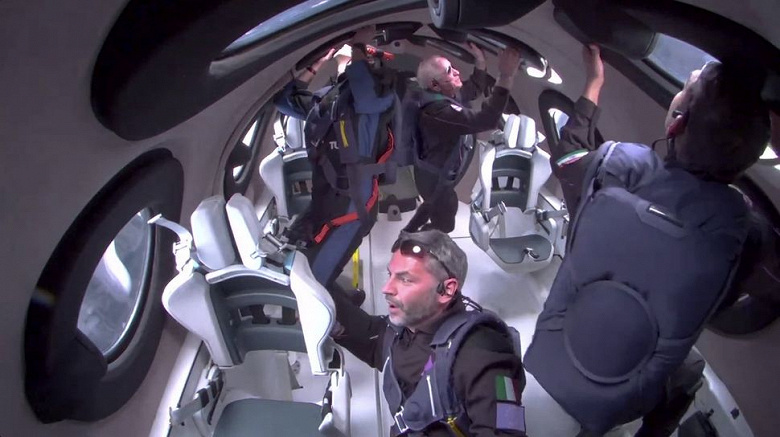The company plans to send up to 750 astronauts per year, starting in 2026
On June 8, Virgin Galactic made a landmark suborbital flight, sending a Turkish astronaut and three space tourists into space aboard the VSS Unity spaceplane.
Taking off from Spaceport America in New Mexico, Unity separated from the Eve carrier aircraft at an altitude of 13,582 meters and continued its journey to space using its own engine. The Galactic 07 mission reached an altitude of 87.5 km, becoming Virgin Galactic's seventh commercial spaceflight on Unity. The spaceplane landed safely back at Spaceport America an hour after takeoff.
On board VSS Unity was Tuva Atasever, a Turkish astronaut who became the first Turkish citizen to fly into space on a commercial spacecraft. During a press conference after the flight, Atasever shared his impressions: “This is not something that can be described in words. This is something you need to feel in your gut».
Atasever was joined by VSS Unity commander Nicola Pecil and pilot Jameel Janjua, as well as Virgin Galactic pilots Andy Edgell and C.J. Sturckow, who flew the mothership VMS Eve.
Virgin Galactic named the three space tourists who paid for this flight: Anand Harish Sadhwani, Irving Izchak Pergamen and Giorgi Manenti. Sadhwani, who was born in Houston, wore the U.S. and Indian flags on his flight suit as a sign of respect for his home countries. Parchment, which grew in Israel, carried the US and Israeli flags. Manenti, an investment strategy consultant from London, was amazed by the view of the Earth from space, saying: «It was a surreal experience».
The flight of Galactic 07 marked the end of operation of the VSS Unity spaceplane. Virgin Galactic is switching to a new Delta Class spacecraft designed for more frequent flights and increased access to space. Its first launch is scheduled for 2026.
The new spacecraft will be able to fly at least twice a week, which is about eight times the frequency of SpaceShipTwo. Virgin Galactic plans to build at least two ships for its new fleet.

«In 2026, we are going to send two spacecraft and reach launch 750 astronauts per year. This is more than has been in space in the 60-year history of space flights», — Moses said about the flight capabilities of the new fleet.
The Galactic 07 mission also demonstrated exploration capabilities. On board were payloads from Purdue University and the University of California, which were conducting experiments in microgravity conditions.
Virgin Galactic has a long-standing relationship with NASA, having launched payloads under the NASA Flight Opportunities program and recently awarded a new five-year contract.

